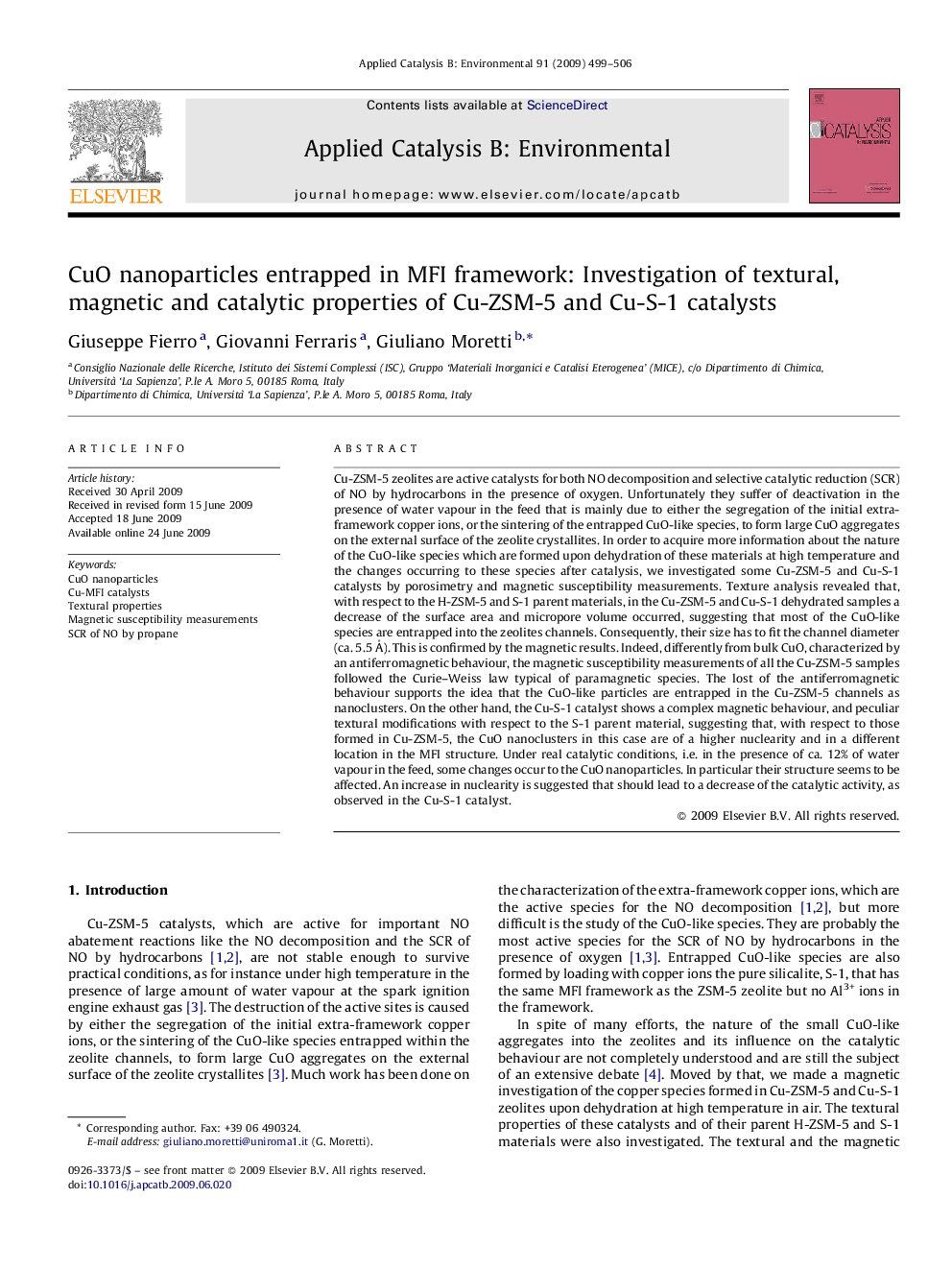| کد مقاله | کد نشریه | سال انتشار | مقاله انگلیسی | نسخه تمام متن |
|---|---|---|---|---|
| 47763 | 46481 | 2009 | 8 صفحه PDF | دانلود رایگان |

Cu-ZSM-5 zeolites are active catalysts for both NO decomposition and selective catalytic reduction (SCR) of NO by hydrocarbons in the presence of oxygen. Unfortunately they suffer of deactivation in the presence of water vapour in the feed that is mainly due to either the segregation of the initial extra-framework copper ions, or the sintering of the entrapped CuO-like species, to form large CuO aggregates on the external surface of the zeolite crystallites. In order to acquire more information about the nature of the CuO-like species which are formed upon dehydration of these materials at high temperature and the changes occurring to these species after catalysis, we investigated some Cu-ZSM-5 and Cu-S-1 catalysts by porosimetry and magnetic susceptibility measurements. Texture analysis revealed that, with respect to the H-ZSM-5 and S-1 parent materials, in the Cu-ZSM-5 and Cu-S-1 dehydrated samples a decrease of the surface area and micropore volume occurred, suggesting that most of the CuO-like species are entrapped into the zeolites channels. Consequently, their size has to fit the channel diameter (ca. 5.5 Å). This is confirmed by the magnetic results. Indeed, differently from bulk CuO, characterized by an antiferromagnetic behaviour, the magnetic susceptibility measurements of all the Cu-ZSM-5 samples followed the Curie–Weiss law typical of paramagnetic species. The lost of the antiferromagnetic behaviour supports the idea that the CuO-like particles are entrapped in the Cu-ZSM-5 channels as nanoclusters. On the other hand, the Cu-S-1 catalyst shows a complex magnetic behaviour, and peculiar textural modifications with respect to the S-1 parent material, suggesting that, with respect to those formed in Cu-ZSM-5, the CuO nanoclusters in this case are of a higher nuclearity and in a different location in the MFI structure. Under real catalytic conditions, i.e. in the presence of ca. 12% of water vapour in the feed, some changes occur to the CuO nanoparticles. In particular their structure seems to be affected. An increase in nuclearity is suggested that should lead to a decrease of the catalytic activity, as observed in the Cu-S-1 catalyst.
Journal: Applied Catalysis B: Environmental - Volume 91, Issues 1–2, 7 September 2009, Pages 499–506